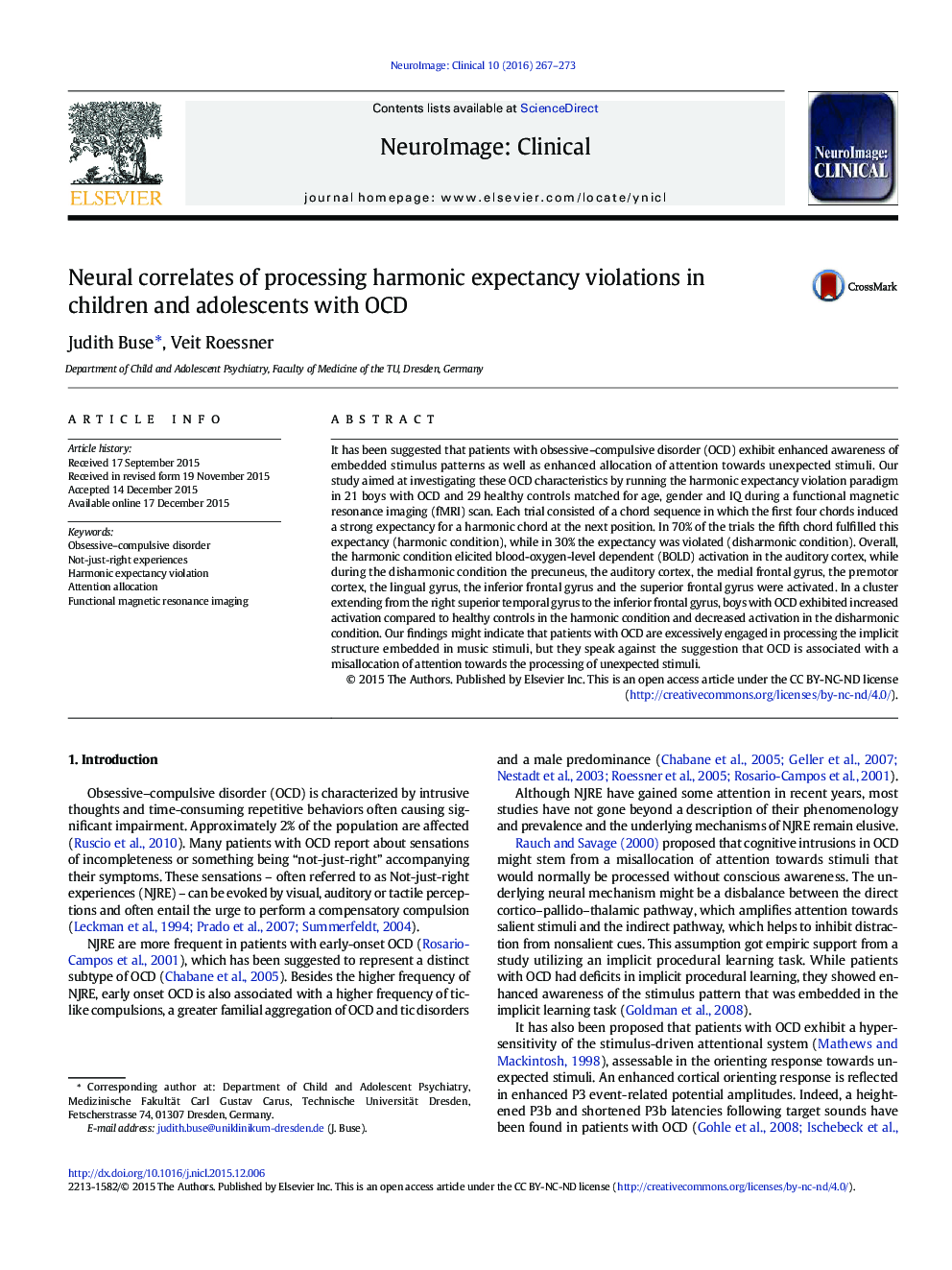| کد مقاله | کد نشریه | سال انتشار | مقاله انگلیسی | نسخه تمام متن |
|---|---|---|---|---|
| 3074874 | 1580957 | 2016 | 7 صفحه PDF | دانلود رایگان |
• We ran the harmonic expectancy violations in boys with OCD and controls during fMRI.
• We examined processing of embedded stimulus pattern and unexpected stimuli.
• We found increased activation in superior temporal/inferior frontal gyrus in OCD.
• Boys with OCD excessively processed the implicit structure of music stimuli.
It has been suggested that patients with obsessive–compulsive disorder (OCD) exhibit enhanced awareness of embedded stimulus patterns as well as enhanced allocation of attention towards unexpected stimuli. Our study aimed at investigating these OCD characteristics by running the harmonic expectancy violation paradigm in 21 boys with OCD and 29 healthy controls matched for age, gender and IQ during a functional magnetic resonance imaging (fMRI) scan. Each trial consisted of a chord sequence in which the first four chords induced a strong expectancy for a harmonic chord at the next position. In 70% of the trials the fifth chord fulfilled this expectancy (harmonic condition), while in 30% the expectancy was violated (disharmonic condition). Overall, the harmonic condition elicited blood-oxygen-level dependent (BOLD) activation in the auditory cortex, while during the disharmonic condition the precuneus, the auditory cortex, the medial frontal gyrus, the premotor cortex, the lingual gyrus, the inferior frontal gyrus and the superior frontal gyrus were activated. In a cluster extending from the right superior temporal gyrus to the inferior frontal gyrus, boys with OCD exhibited increased activation compared to healthy controls in the harmonic condition and decreased activation in the disharmonic condition. Our findings might indicate that patients with OCD are excessively engaged in processing the implicit structure embedded in music stimuli, but they speak against the suggestion that OCD is associated with a misallocation of attention towards the processing of unexpected stimuli.
Journal: NeuroImage: Clinical - Volume 10, 2016, Pages 267–273
